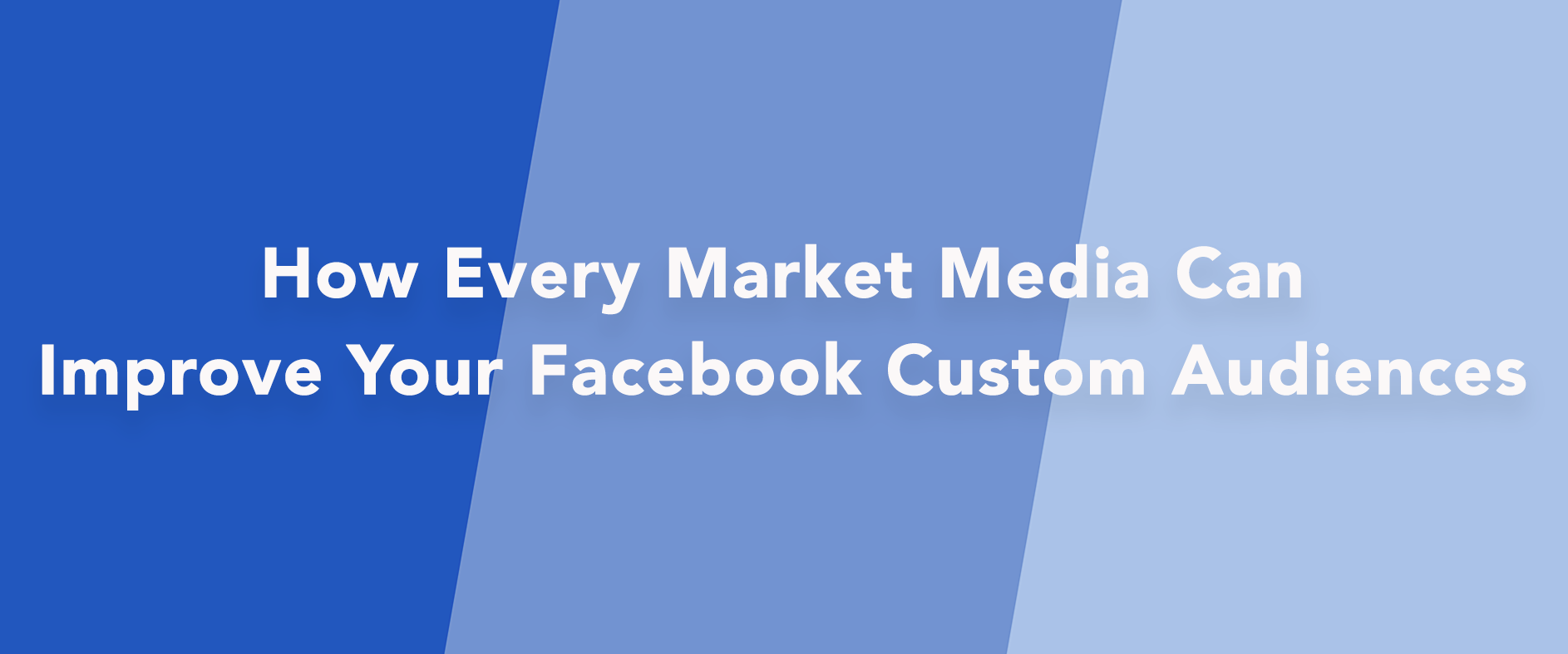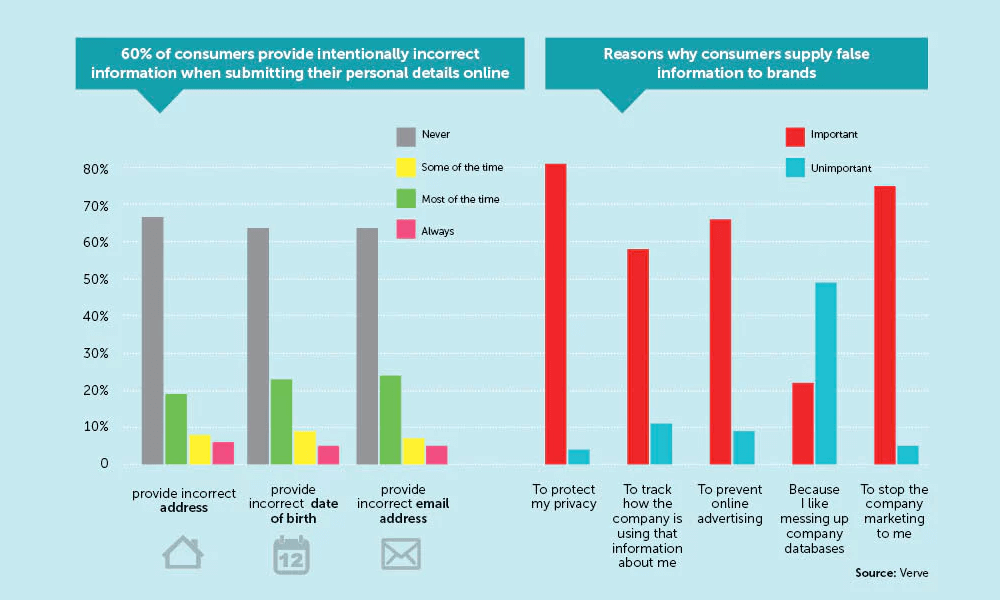
Hello again EMM readers. We’re here to tell you about linking B2B email to B2C email with EMM’s product, Linkkey™! First things first, you may have questions in regards...
In theory, Facebook is a fantastic platform for creating or transferring custom audiences. The wealth of data Facebook holds on users, and the many options for defining custom audiences, mean it’s possible to target ads on the platform very specifically. Trouble is, it’s relatively hard to import data from another source into Facebook. General business data from sources other than Facebook is tough to match to Facebooks’s platform. So while Facebook is an excellent platform for B2C marketing campaigns that mostly take place entirely on Facebook, and companies that sell mostly to smaller businesses have some success there too, it’s difficult to use it for B2B marketing effectively.
Difficult, but not impossible. And the results are worth it.
First: what’s a Facebook Custom Audience and how do you create one?

Typically a B2B company will want to use the first option, uploading a list of business contacts and their associated data, either by hand or via a portal service. Then Facebook will match data on the list with data on its users to create an audience. Which is where we hit a problem.
Match rate is below 50% for Facebook, only slightly better for Google Customer match - and just above 10% for Twitter:


Looking for a way to connect to Rick and Morty fans? Facebook has you covered. But what happens when you look for business data like title, business name, or industry? They don’t have it. (They don’t have SIC either.)
As a result, the match rate between a hashed B2C database like Facebook’s and a standard business’ B2B database can be as low as 10% to 15%, even among portals that have optimized for B2B data conversions, such as LiveRamp or Neustar.
That’s a match rate low enough to wipe out most of the value from a list, and there’s the added concern that some uploading portals won’t let you create a custom audience unless you get a match rate of 20% or more, meaning low-matching lists have to be cleaned or uploaded manually: lots of work for that 15%-match payoff.
There’s no self-service solution that can overcome this. Even when implemented well and professionally, the best-performing self-service platform only achieved a 50.4% match rate.
There are choices companies can make to increase the likelihood that their lists will produce matches. Joe Chernov, VP of marketing at Kinvey, told Adweek: ‘I believe our match rate is higher than other business-to-business companies because we run a content marketing playbook. Our leads have all converted on educational content offers in the past. The absence of “purchased” names in our CRM means our database quality is high – thus our match rate is high.’
But their match rate is variable depending on the size of their target company. Kinvey gave that data to Adweek for the same post: indie developer lists matched at around 40%, while enterprise clients matched at between 29% and… 6%.
List hygiene is super important. But good luck achieving 80% match rates - common for B2C marketers - with just that method.
So for our enterprise customers, EMM uses a different approach. We’ll use our own logic stack, Linkkey.io, to generate a far higher match rate than is available with self-service tools.
Initially, Linkkey.io matches B2B to B2C data, letting users target the same audiences on Facebook that they already have in their CRMs. Initially, it does that by matching with our own considerable B2C email database. This stage supplies 30% of all the matches Linkkey.io delivers, and we’re sometimes asked how it differs from a standard email append. The answer is, this stage doesn’t - but Linkkey is a more complex process.
We’ll take either the customer’s file of unique data, or ours, or in some cases both to maximize the amount of unique data available, and match them using roughly 40 pieces of logic including geography and name-based logic to return ISP-based emails like Gmail, Yahoo, or Hotmail for B2B contacts.
That’s vital because ISP based email is used for a lot more registrations. People tend to use their personal email rather than their work one for their Twitter account, Instagram, and yes, Facebook, so it winds up in a lot more databases.
That means it matches far better to the pools of hashed emails that are kept by B2C-oriented sites. It’s not uncommon to double or even triple your audience using a mixture of this technique and probabilistic matching.
There are two ways of matching data sets, probabilistic and deterministic. Deterministic matching aims to match user profiles across different data sets to identify the same user. Obviously, this works if the data sets are comparable, containing enough of the same kinds of information to get a match. But when that isn’t the case, a more sophisticated tool is needed.
Probabilistic matching uses logical rules to identify what is probably the same user across different data sets or accounts. If we were talking about devices rather than databases, it would work like this: 
The user of all these devices, at the same IP address, isn’t definitely the same person. But they probably are.
To achieve probabilistic matching you need a wide range of data points so that patterns can more easily be identified. You also need to know how much inexactitude you’re prepared to tolerate: as Todd Schoenherr, VP of Signal, says: ‘While probabilistic matching achieves greater scale, the match is not perfectly accurate.’ In terms of the illustration above, the more pieces of data that all point the same way - IP, location, gender, age, interests, habitually visiting the same sites - the more likely that person is to be the same person.
In our terms, we’d be looking at two sets of data and trying to figure out if James.Smith@biz.com is the same person as JamesSmith87767@gmail.com. But the principle is the same, and so is the effect of increasing variables. The more probabilistic, the more inferred the match is, the fewer pieces of data support it, the less likely it is to be accurate: 
That ‘match score threshold’ can be adjusted up or down, balancing out false positives (which must be paid for) with false negatives (who cannot be marketed to). For us, the aim is to find an appropriate threshold score where our customer is happy with the balance between false negatives excluded, and false positives included.
We’ve seen how different business sizes fare very differently in terms of Facebook’s match rate. Lists consisting of small business or home office businesses will usually achieve far higher match rates than lists for enterprises.
With that in mind, it makes sense to split lists by business size; small business oriented lists might be worth simply feeding into Facebook ‘as is.’ With very high numbers of potential clients and a low per-client monetary value, lower match rates are less of a concern and the cost of advertising to false positives is less likely to be recouped in large sales.
Lists consisting mainly of enterprise leads can achieve match rates as low as 6% or less, as we’ve seen. Therefore, these lists should be selected for use with Linkkey.io’s more advanced features via Every Market Media’s consulting services to ensure that the larger-sized deals they represent are not lost to excessive false negatives due to a low match rate.
Facebook is a great place to connect with very precisely delineated audiences and deliver highly targeted messages. Applying facebook’s laser-targeted approach to B2B marketing, especially account-based marketing, means you can reach those people with every type of ad and post facebook supports: video, images, polls, questions, content, promotions and giveaways, quizzes, and more. And as we discussed earlier, conversions can skyrocket, especially when Facebook Custom Audiences are used alongside email and other contact methods.
That can be as applicable to B2B marketing as it is to B2C, but the span between business-focused data and a consumer-focused platform must be bridged to make it effective. List hygiene helps, and in this as in other things small businesses perform very similarly to consumers. But most important of all is the capacity to make connections between the personal/B2C-type data and the traditional business data of the same individuals in order to increase match rates on B2B lists until they’re competitive with B2C lists.
We’ve seen at the start of this post how Custom Audiences done right can blow your Facebook marketing up - think more than doubling conversions, like O2 did. Or turning Facebook into a powerful new part of your account-based marketing machine instead of a peripheral add-on.
Through consulting and via Linkkey, Every Market Media delivers the power of Facebook Custom Audiences and turns Facebook from a low-priority side channel for B2B into a way to generate, nurture and convert real leads.
Connect with us to get started today!


Without reliable access to accurate data, marketing aims at the wrong targets, sales and marketing can’t be effectively aligned and revenue and ROI suffer, meaning it’s...